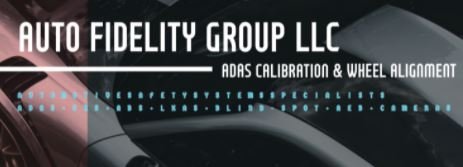Transitions
Seems with every new model that comes off the assembly line there’s something different about them. Today’s cars still transports us from one place to another just as the model T’s did in their day. However, we do it with more creature comforts and safety features than ever before. Now, it’s not so much about ‘just getting’ from point A to point B, but how ‘comfortably’ you get from A to B. There’s no doubt we’ve transitioned from mere transportation to a sophisticated computer on wheels. Innovations, technology, and changes in our concept of the modern car are all part of these transitions.
All these innovations in today’s cars mean changes for the consumer as well as the service people who keep them on the road. Long gone are the road maps that dad could never figure out how to fold. Now, you press a button, speak to the GPS system, and it talks back to you and tells you the best route to your destination. Even for the mechanic innovations and technology have transitioned all those stacks of repair manuals into one click of the mouse. But, these transitions into ‘newer and better’ bring on their own set of growing pains that both the customer and the technician have to deal with.
Take for instance, headlights. I’ve changed enough headlights in my years of service work to light a path to the moon and back. For years it was a simple task of taking out a couple of screws from the chrome trim around the headlight, and then disconnecting the three prong connector. Oh sure, there were a few that you had to take off another cover, maybe a flip up headlamp door, or you might go through the inner fender, but for the most part, it wasn’t all that difficult.
Nowadays, many of the new models have to have the entire front of the car disassembled in order to get to the bolts that secure the headlamp assembly. Of course, putting it back into place ain’t no picnic either. To say the least, it’s been quite a transition from the old way of doing things.
Not only do today’s mechanics have to learn new repair procedures and diagnostics, but the customer has to transition from thinking these somewhat simple repairs are not as quick and easy as they used to be. Some people are utterly shocked at the cost of changing out a headlight these days, not to mention if those headlights are the HID style. (Boy… that’ll make ya want to transition back to the older sealed beams in a hurry.)
This can be a big issue at the repair shop. Some people are unaware of what it takes to do certain basic tasks, and are only basing what it should cost on previous cars they’ve owned. On one occasion I got a call to verify the labor time for replacing a headlight on a 2008 Chevy Malibu. Seems, another shop mistakenly quoted a price based on what they “thought” it was going to take. Then, after opening the hood they found out there was no access to the bulb. I looked it up and gave the customer the bad news. Needless to say, the customer wasn’t at all happy.
None of this is anything new in the automotive industry though. Transitioning from one way of doing things to another has been going on since the wheel was invented. It comes down to this: Engineers design and create these new “state of the art” models, consumers buy them, and mechanics make the repairs. Usually, the consumer doesn’t find out how expensive or difficult some of these repairs are until they have a problem.
Engines, transmissions, interiors, coolant systems, brakes, steering, and every other part of the car, are all in somewhat of a state of transition to a newer design or process. Nothing remains the same, and the sad part about a lot of these changes… they change the cost of the repair. Expensive spark plugs, multiple coils tangled amongst fuel lines and wiring, internal water pumps, and starter motors buried inside the engine. They all do the same thing the older components accomplished but, aren’t always as easy to replace or repair.
The professional mechanic is in a tough spot. They have to understand these systems as well as know how to service them. The consumer on the other hand, might be a bit confused as to why replacing their air conditioner components requires reflashing the computer, or why a headgasket replacement involves taking the entire body off the frame. It’s just another one of these transitions that needs to be confronted.
For most consumers the transition into these ‘new’ designs and technology are far more recognizable in their wallets than what they see as ‘different’ in the appearance or operation of their new car. The mechanic on the other hand, probably is well aware of these transitions. He might come up to the customer with a somber look on their face after he has diagnosed a faulty evaporator core that he knows is going to take all day to change out. He’s already aware of how much work is involved, the customer may not. When the customer finds out they’ll probably have the same somber look on their face but for different reasons.
Even with all these changes the real truth of the matter is… it’s the same old issues, “Give em’ what they want, and don’t worry so much about how it will get fixed… the mechanics will take care of it.” If you want to blame somebody for all of these transitions… try blaming the designers and engineers, blame government regulations, and quite possibly the consumer too! Mainly, for demanding all those bells and whistles in today’s cars and then buying them. Don't blame the mechanic! It’s the reality of the fast paced modern world we live in, it’s transitioning every day. Although, it really is the same old world out there, just different at the same time.
A quote I heard years ago says it all, “Change transitions into more change.” How true that is, and for the mechanic… it’s never the same ever again.














Recommended Comments
Create an account or sign in to comment
You need to be a member in order to leave a comment
Create an account
Sign up for a new account in our community. It's easy!
Register a new accountSign in
Already have an account? Sign in here.
Sign In Now